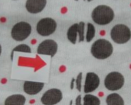 Two weeks ago, I wrote that different importers have different quality standards. I even listed 3 tips to explain your quality standard to QC inspectors.
Two weeks ago, I wrote that different importers have different quality standards. I even listed 3 tips to explain your quality standard to QC inspectors.
So, is it enough to explain what the different standards are?
The more I think about it, the more it seems unmanageable for a professional inspection firm to assign the same inspectors for different buyers who have vastly different standards.
The spectrum in the importers’ requirements is pretty wide. To simplify, there are 3 cases:
- Case 1: buyer has very, very minimal expectations. For example, he purchases bags for a very low price, and sell them in a discount store in the Middle East.
- Case 2: buyer is happy with “what would be acceptable in a supermarket in Western Europe or in the US”.
- Case 3: buyer sells in a high-requirement channel that does not tolerate any visual defect. For example, he purchases bags that are given away to each shopper in Chanel shops.
The issue is the calibration of the inspector’s judgment. And it creates HUGE problems:
- If he is in the first case mentioned above, and he is too tough: he will have a strong discussion with the factory, who will not accept to be held at too high a standard.
- If he is in the third case mentioned above, and he is too lax: the importer might receive some products that passed QC but that can’t be sold.
Let’s take an example — the quality of a print on a garment. The dots you can see below are about 8mm in diameter.
This is clearly a defect, even for the cheapest buyers:
But how about this, if it is always present on 80% of the products?
This second example is quite ambiguous. Let’s say an inspector of garments in Fujian province (where garments are ALWAYS of low quality) is checking this batch. Remember, this inspector has seldom seen garments with perfect finishing.
Will the inspector count it as a minor defect, and have a long discussion with the manufacturer (who got paid a very little price, barely breaks even, and doesn’t understand why this would be a cause for rejection)?
Don’t count on it!


